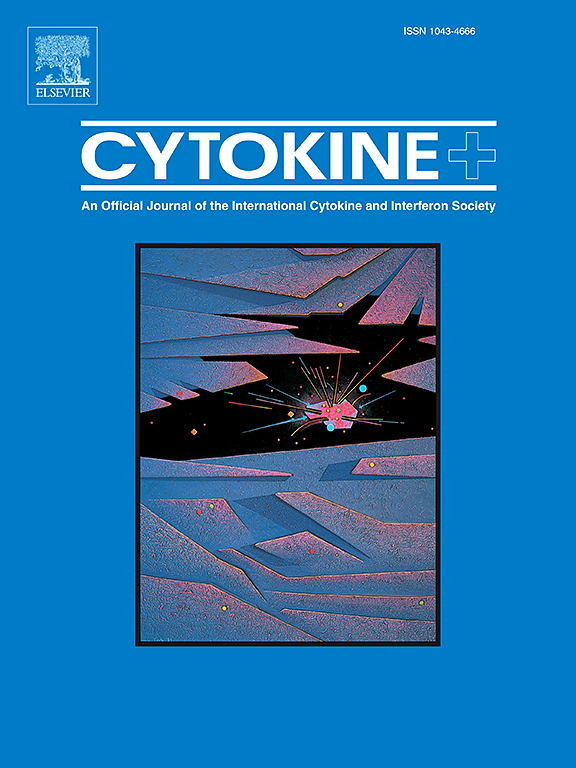The role of interleukin (IL)-2 cytokine family in Parkinson's disease
IF 3.7
3区 医学
Q2 BIOCHEMISTRY & MOLECULAR BIOLOGY
引用次数: 0
Abstract
Parkinson's disease (PD) is a neurodegenerative disorder, which primarily impacts the nervous system, marked by its immune and inflammatory characteristics. The interleukin-2 (IL-2) cytokine family has a crucial role in regulating both neuroinflammation and immune activity, positioning it as one of the critical immune pathways in PD. Balancing pro-inflammatory and anti-inflammatory signals in PD heavily depends on the IL-2 cytokine family, that includes IL-2, IL-4, IL-7, IL-9, IL-15 and IL-21. This balance is vital for neuron survival and resistance to degeneration. Disruptions in IL-2 signaling can upset the equilibrium among regulatory T cells (Tregs) and pro-inflammatory T cells, such as Th1 and Th17, further aggravating the chronic neuroinflammation typical of PD. In PD, a decline in IL-2 or receptor dysfunction can hinder Treg activity, leading to increased inflammation and neurodegeneration. Similarly, IL-15 and IL-21 supports cytotoxic immune cell function, including natural killer (NK) cells and CD8+ T cells, which may exacerbate neuronal damage by sustaining pro-inflammatory processes. Moreover, IL-4 and IL-7 have anti-inflammatory roles in maintaining T cell homeostasis, and their dysregulation can contribute to interruption of the blood-brain barrier and increased infiltration of immune cells into the central nervous system. Targeting the IL-2 cytokine family in Parkinson's disease has shown therapeutic potential by expanding Tregs, which reduce neuroinflammation and promote dopaminergic neuron survival. Recombinant IL-2 and IL-2/anti-IL-2 complexes have demonstrated efficacy in animal models, enhancing Treg function and leading to improved neuroprotection. Additionally, IL-4-based therapies have been explored for their ability to shift microglia toward a neuroprotective phenotype, further enhancing neuronal survival by modulating inflammatory responses and cellular metabolism. Current research is exploring how to optimize cytokine delivery while minimizing immune side effects, with the goal of developing more targeted therapies for PD.

白细胞介素-2细胞因子家族在帕金森病中的作用
帕金森病(PD)是一种神经退行性疾病,主要影响神经系统,以其免疫和炎症特征为特征。白细胞介素-2 (IL-2)细胞因子家族在调节神经炎症和免疫活性方面起着至关重要的作用,是帕金森病的关键免疫途径之一。PD中促炎和抗炎信号的平衡很大程度上依赖于IL-2细胞因子家族,包括IL-2、IL-4、IL-7、IL-9、IL-15和IL-21。这种平衡对于神经元存活和抵抗退化是至关重要的。IL-2信号的破坏可破坏调节性T细胞(Tregs)和促炎T细胞(如Th1和Th17)之间的平衡,进一步加重PD典型的慢性神经炎症。在PD中,IL-2下降或受体功能障碍可阻碍Treg活性,导致炎症和神经变性增加。同样,IL-15和IL-21支持细胞毒性免疫细胞功能,包括自然杀伤(NK)细胞和CD8+ T细胞,这可能通过维持促炎过程加剧神经元损伤。此外,IL-4和IL-7在维持T细胞稳态中具有抗炎作用,其失调可导致血脑屏障中断,增加免疫细胞向中枢神经系统的浸润。靶向IL-2细胞因子家族治疗帕金森病已显示出通过扩大Tregs减少神经炎症和促进多巴胺能神经元存活的治疗潜力。重组IL-2和IL-2/抗IL-2复合物在动物模型中显示出有效性,增强Treg功能并改善神经保护作用。此外,基于il -4的疗法已被探索其将小胶质细胞转向神经保护表型的能力,通过调节炎症反应和细胞代谢进一步提高神经元存活率。目前的研究正在探索如何优化细胞因子的传递,同时最大限度地减少免疫副作用,以开发更有针对性的PD治疗方法。
本文章由计算机程序翻译,如有差异,请以英文原文为准。
求助全文
约1分钟内获得全文
求助全文
来源期刊

Cytokine
医学-免疫学
CiteScore
7.60
自引率
2.60%
发文量
262
审稿时长
48 days
期刊介绍:
The journal Cytokine has an open access mirror journal Cytokine: X, sharing the same aims and scope, editorial team, submission system and rigorous peer review.
* Devoted exclusively to the study of the molecular biology, genetics, biochemistry, immunology, genome-wide association studies, pathobiology, diagnostic and clinical applications of all known interleukins, hematopoietic factors, growth factors, cytotoxins, interferons, new cytokines, and chemokines, Cytokine provides comprehensive coverage of cytokines and their mechanisms of actions, 12 times a year by publishing original high quality refereed scientific papers from prominent investigators in both the academic and industrial sectors.
We will publish 3 major types of manuscripts:
1) Original manuscripts describing research results.
2) Basic and clinical reviews describing cytokine actions and regulation.
3) Short commentaries/perspectives on recently published aspects of cytokines, pathogenesis and clinical results.
 求助内容:
求助内容: 应助结果提醒方式:
应助结果提醒方式:


